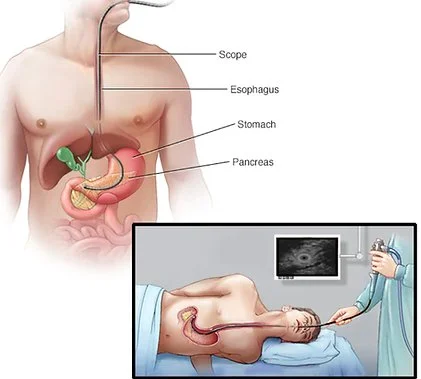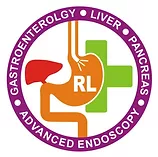ENDOSCOPIC ULTRASOUND (EUS)

Endoscopic ultrasound (EUS) is a minimally invasive procedure to assess digestive (gastrointestinal) and lung diseases. A special endoscope uses high-frequency sound waves to produce detailed images of the lining and walls of your digestive tract and chest, nearby organs such as the pancreas and liver, and lymph nodes.
When combined with a procedure called fine-needle aspiration, EUS allows your doctor to sample (biopsy) fluid and tissue from your abdomen or chest for analysis. EUS with fine-needle aspiration can be a minimally invasive alternative to exploratory surgery.
EUS techniques are also used in certain treatments, such as draining pseudocysts.
Why it's done
EUS is used to find the cause of symptoms such as abdominal or chest pain, to determine the extent of diseases in your digestive tract and lungs, and to evaluate findings from imaging tests such as a CT or MRI.
EUS may help in the evaluation of:
Cancer of esophagus, lung, pancreas or stomach, and ampullary and rectal cancers
Lymphoma, Neuroendocrine tumors, Pancreatitis and pancreatic cysts, Bile duct stones
EUS can help:
Determine the extent (stage) of cancer, if present
Determine if cancer has spread (metastasized) to your lymph nodes or other organs
Evaluate abnormal findings from imaging tests, such as cysts of the pancreas
Guide drainage of pseudocysts and other abnormal collections of fluid in the abdomen
EUS is performed on an outpatient basis and is well-tolerated by most people.
How you prepare
Your doctor will give you specific instructions to prepare for your EUS. You may be asked to fast before EUS,to make sure your stomach is empty. Generally, you’ll be asked to fast for at least 6 hours before test. Stop taking blood thinners after a discussion with your doctor. Blood thinners may increase your risk of bleeding if fine-needle aspiration is performed during EUS. If you have chronic conditions, such as diabetes or high blood pressure, your doctor will give you specific instructions regarding your medications.
What you can expect
During EUS your doctor passes a thin, flexible tube (endoscope) through your mouth and through your digestive tract.
A small ultrasound device (transducer) in the tube produces sound waves that create a precise image of surrounding tissue.
The endoscope is then gradually withdrawn.
If you have fine-needle aspiration with EUS, The needle extracts fluid and tissue for analysis.
Results
Where it is done?
EUS is being done at the empanelled hospital where it is available.
